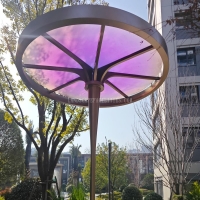Welcome to the website for landscape facilities products and knowledge.
How does the table’s surface handle hot items like grills or cookware?
When placing sizzling grills or scorching cookware directly onto your table surface, understanding its heat tolerance becomes crucial for both safety and longevity. Modern table surfaces employ advanced materials and engineering to combat thermal damage, yet their capabilities vary significantly across different constructions.
The science behind heat-resistant tables begins with their core material composition. Engineered quartz and premium granite countertops typically withstand temperatures up to 400°F (204°C) without compromising their structural integrity, thanks to their dense mineral composition and resin binders. Porcelain slabs demonstrate even greater resilience, often enduring direct heat exposure up to 1200°F (649°C) without discoloration or cracking. These non-porous surfaces effectively distribute thermal energy, minimizing localized hot spots that could cause permanent damage.
However, not all surfaces share this robust heat tolerance. Popular laminate countertops present vulnerability to extreme temperatures, with prolonged exposure to items above 300°F (149°C) potentially causing irreversible melting or discoloration. Solid wood surfaces, while charming, require immediate protection from hot items as they can develop permanent burn marks and finish damage at temperatures exceeding 350°F (177°C).
Manufacturers incorporate several technologies to enhance thermal resistance. Many premium surfaces undergo specialized tempering processes that create molecular bonds resistant to thermal shock. Some incorporate micro-ventilation layers that dissipate heat rapidly across the surface, while others feature ceramic-infused coatings that reflect infrared radiation.
For daily protection, experts recommend using trivets or heat pads as a primary barrier between hot cookware and your table surface. The critical temperature threshold for most household tables falls between 350-400°F (177-204°C), beyond which even heat-resistant materials may suffer. Immediate cleanup of thermal incidents proves essential—allowing oils or moisture to bake onto hot surfaces can create stubborn stains that penetrate the material's pores.
Regular maintenance includes inspecting for micro-fractures that may develop over time from repeated thermal expansion and contraction. For outdoor tables, UV-resistant sealants provide additional protection against combined solar and thermal stress. When selecting new furniture, verify the manufacturer's specific heat resistance ratings and warranty coverage for thermal damage.
Understanding your table's thermal limitations ensures both its aesthetic preservation and functional durability. Through proper care and conscious usage, your table surface can maintain its beauty while safely accommodating your culinary creations for years to come.
Related search:

Recommendation
Metal frame with gradient color acrylic combined with high-end shading landscape facilities